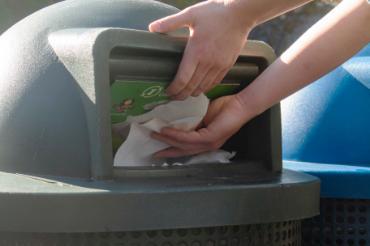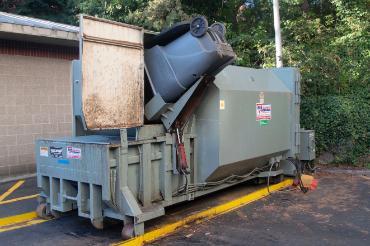
Compost
Where does your compost go?
- Full individual bins on campus are emptied into two compost compactors on campus.
- Once full, the compactors are picked up by Cedar Grove and brought to one of their facilities in Maple Valley or Everett.
- At their facilities, Cedar Grove turns 350,000 tons of residential and commercial yard and food waste into commercial soil and infill.
Not all compost leaves campus
Seattle University has an onsite facility that turns pre-consumer food waste into compost.
- Collecting feedstocks is the first step to the compost-making process on campus.
- The main source of feedstocks is pre-consumer food waste produced by dining services.
- The food waste is added to the batch mixer and it’s given a quick look through to check for contamination.
- The feedstocks are added to the batch mixer in a 2:1 ratio of brown feedstock to greens.
- woodchips from local landscaping companies make up the brown feedstocks;
- while the green feedstocks include pre-consumer food waste.
- Once in the mixer, the two types of feedstocks are mixed together with water until the mixture is well-combined and has reached about 50% moisture content.
- When the mixture is ready, it is brought into the compost barn where it undergoes a two-stage process.
- The mixture spends at least four weeks in the aerated bay where air is pushed through the pile.
- It is then moved to the curing bay for another four weeks.
- During these two months, the temperature of the mixture is monitored to ensure the feedstocks are breaking down in a healthy environment.
- Once the compost has broken down and tested negative for pathogens, such as e-coli, it is moved outside.
- The compost is used by the grounds department in our on-campus green spaces.
Images courtesy of Lauren Kobayashi; and Cedar Grove


